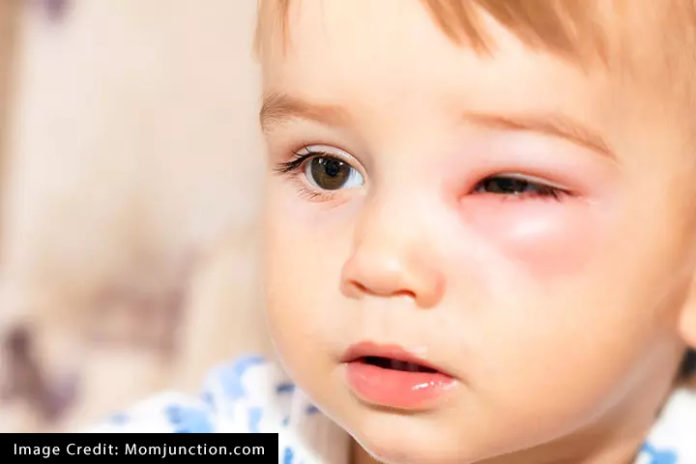One morning I got up and found my 3-year-old daughter had a slightly swollen and red-eye. I thought it to be a normal mosquito bite and left it to heal itself. It was my biggest mistake. In a couple of days, my daughter’s eye got swollen huge enough to not able to even see anything. I rushed her to the doctor and found out that she is suffering from periorbital cellulitis.
Most people like me think that cellulitis occurs mostly on legs and that too in adults. That’s not true. So let’s know everything about periorbital cellulitis infection and its treatment.
What is Periorbital Cellulitis?
Periorbital cellulitis is referred to as infection and inflammation of the tissue surrounding the eye caused by bacteria. It is most common in children below 5 years of age. Periorbital cellulitis involves the area from the skin of eyelid to the bony structure enclosing the eye.
Another similar condition is Orbital Cellulitis which involves the infection of the eye and eye structure within the bony cavity of the face. Both of cellulitis conditions are serious and require immediate medical attention by the dermatologist.
What causes Periorbital Cellulitis?
Periorbital Cellulitis is most commonly caused by a bacterial infection. The bacteria involved are:
- Staphylococcus aureus
- Streptococcus pyogenes
- Haemophilus influenzae
The bacteria enter the eye and the surrounding cavity in many different ways. The following increases your child’s risk for periorbital cellulitis:
- A bite from an insect or animal
- A scratch or cut
- Foreign object in the eye
- A sinus or respiratory infection
- A skin infection like impetigo
- An eyelid bump called stye or swelling of tear glands
What are the symptoms of Periorbital Cellulitis?
Every child may respond to this condition differently. However, the most common symptoms of periorbital cellulitis that appear include:
- Swelling of both eyelids, upper & lower
- Redness of both eyelids
- Fever
- Pain
- General discomfort and drainage from your child’s eye
How is Periorbital Cellulitis diagnosed?
Healthcare provider of your child may conduct the following examination procedures:
- Vision Test: To check your child’s vision, eye pressure, and eye movement
- Neuro Exam: To check brain functions of your child such as balance, strength, and how your child’s pupils respond to light
- Blood Test: To check which bacteria is behind the infection
- CT Scan or MRI: To check rupture, abscess, swelling, and foreign objects, if any
How is it treated?
Periorbital Cellulitis infection treatment generally takes around 2 weeks. Here are the treatment options doctor may prescribe to your child:
- Antibiotics: to treat the bacterial infection
- Acetaminophen: to lower fever and pain
- NSAIDs: to combat pain, swelling, and ever
Though some of the medications are available without any doctor’s prescription, when it comes to your child, DO NOT give him or her any medicine without consulting a medical practitioner.
Conclusion
Periorbital Cellulitis is a serious condition and you don’t want to see your child suffering in pain. If untreated, the infection may spread to other parts of your child’s body such as ears. Infection in the eye may lead to severe damages such as loss of vision. It may be life-threatening if it spreads to the brain.
I have learned from my experience to not take even the slightest risk with your child’s health and see a doctor immediately in such cases.









